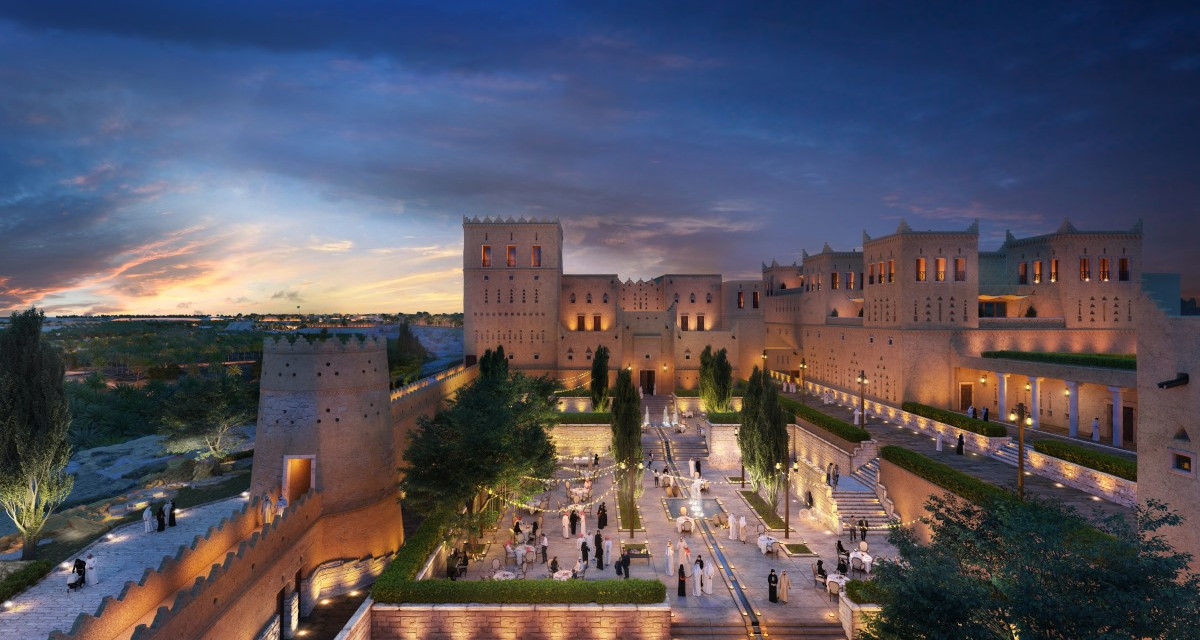(Promotional)
With museums, souks, immersive theatre and more, culture vultures will be captivated by what Diriyah has to offer
Steeped in more than 300 years of history, Diriyah is Saudi Arabia’s most important historical and cultural destination. With six galleries, a range of souks and bazaars, a grand mosque, a period village to explore and a UNESCO World Heritage Site, Diriyah is a culture lover’s dream and an unparalleled destination for visitors seeking to learn about Saudi history and heritage.
AT-TURAIF
The centre of governance for the First Saudi State and original home of House Al Saud, it was the Arabian Peninsula’s economic and political epicentre from the late 18th to the early 19th century. It is built in the region’s distinctive Najdi style and is home to one of the most accomplished mud-brick districts in the world. Visitors can explore the site via guided tours offered every half-hour in Arabic or English. Rich in history and aesthetically stunning, At-Turaif is a must-see destination for those seeking to understand the rich cultural forces that birthed the kingdom.
OTHER ACTIVITIES CENTRED AROUND AT-TURAIF
NUZUL
Step back in time to the early years of life in the kingdom during the first Saudi state. Actors provide an immersive experience by replicating a street as it would have been in the 18th century.
THE ARABIAN HORSE SHOW
Head to the Prince Thunayan bin Saud Palace to witness the majestic Arabian horses up close and discover why they are such a pivotal part of Saudi culture.
MUD-BRICK MAKING
Discover the craft behind the creation of At-Turaif and have a go at making your own mud-brick marvel.
ENJOY A TRADITIONAL SAUDI COFFEE
Take a break while browsing the quiet streets of At-Turaif and taste a delicious local coffee served with authentic spices.

GALLERIES
DIRIYAH GALLERY
Located in Salwa Palace – the original home of the Al Saud royal family – the Diriyah Gallery offers a sweeping historical overview of all three Saudi states as well as relics and paraphernalia that speak to the country’s history and heritage. Gallery visitors are free to roam the ruined palace’s various districts and can glimpse the state’s great expansion via maps and diagrams.
ARABIAN HORSE GALLERY
Horses have long held a central role in Arabian culture and are a particular source of pride for the people of Saudi Arabia. During the First Saudi State’s reign, they were indispensable to spear-wielding cavalrymen and functioned as markers of wealth and status. The gallery tells the story of the Arabian horse; its ancestry, lineage, pedigree and proliferation.
MILITARY GALLERY
The Military Gallery’s two sections are located near Imam Abdullah bin Saud Palace and inside Prince Thunayan bin Saud Palace. It takes visitors on a journey through one of the most tumultuous periods in the history of the region.
An extensive Saudi weaponry collection used in the state’s expansion and defensive wars, including sabres, scimitars, shields, spears, munitions and the explosives of the day can be found across both locations.
SOCIAL LIFE GALLERY
The Social Life Gallery extends across a cluster of clay-built homes that highlight the Najdi household culture and the ancient traditions that guided the local populace throughout their daily lives. After touring a typical Najdi courtyard, visitors can enjoy a leisurely stroll through passageways crisscrossing a traditional Diriyah neighbourhood and stop by some of the area’s well-preserved conventional homes, with their intact bedrooms and examples of traditional clothing and attire worn by At-Turaif’s former residents.
GALLERY OF TRADITIONAL ARCHITECTURE
The Gallery of Traditional Architecture showcases the First Saudi State’s most common building methods that are now ubiquitous across the Arabian Peninsula. It highlights Najdi design elements and shows how social norms and Islamic teachings influenced how homes were designed and built, primarily from limestone, clay and wood. As the First Saudi State prospered and premium construction materials became readily available, this elegant architectural style was crystallised.








